Sustainable communities & schools
- Introduction
- How people develop goals & roles
- Historical development of environmental eduation and sustainable development
- Principled procedures for sustainable communities
- Indigenous related notes & Assertion Of Native Lands
- Guidelines for green schools
- Resources
- K-12 lessons on waste -
- Why mars isn't an option
- Ideas on plastic pollution
- Climate change comic - fossil fuels & I'll be fine I got an umbrella
- Global Warming in the Amazon & fish & dolphin deaths
- Change, act or what?
- Sustainable development goals
I have a dream: That humanity will. learn to live sustainably within the limits of our finite world.
We need to keep both hopeful dreams and nightmare scenarios in mind if we are to build a world that can support life and is sustainable.
Introduction
This page explores sustainability and provides principled procedures to guide decision making and implementation of procedures to support sustainable communities for better quality lives for all community members and a sustainable Earth.
It also includes suggestions, and resources. Such as: how people develop goals & roles, historical development of environmental eduation and sustainable development, indigenous related notes & Assertion Of Native Lands, guidelines for green schools, resources for K-12 lessons on waste, why mars isn't an option, ideas on plastic pollution, sustainable development goals guidelines for green schools and resources for sustainable communities and climate change. And Climate change comic, Global Warming in the Amazon & fish & dolphin deaths, Change, act or what?
Principled procedures for decision makers in sustainable communities
A sustainable Earth isn't just the physical matter that is the planet. To be sustainable we must consider the health of all living organisms: their physical, social, psychic systems and their relationships that make them healthy and enduring.
Principled procedures are descriptions of the kinds of actions people will use to guide their decisions and interactions based on their beliefs, wisdom of practice, research, and ethical considerations. In this case for the manner in which people want to be treated and to support a sustainable Earth.
- Always ask of any proposed change or innovation: What will this do to our community? How will this affect our common wealth.
- Always include local nature the land, the water, the air, the native creatures within the membership of the community.
- Always ask how local needs might be supplied from local sources, including the mutual help of neighbors.
- Always supply local needs first (and only then think of exporting products – first to nearby cities, then to others).
- Understand the ultimate unsoundness of the industrial doctrine of ‘labor saving’ if that implies poor work, unemployment, or any kind of pollution or contamination.
- Develop properly scaled value-adding industries for local products to ensure that the community does not become merely a colony of national or global economy.
- Develop small-scale industries and businesses to support the local farm and/or forest economy.
- Strive to supply as much of the community’s own energy as possible.
- Strive to increase earnings (in whatever form) within the community for as long as possible before they are paid out.
- Make sure that money paid into the local economy circulates within the community and decrease expenditures outside the community.
- Make the community able to invest in itself by maintaining its properties, keeping itself clean (without dirtying some other place), caring for its old people, and teaching its children.
- See that the old and young take care of one another. The young must learn from the old, not necessarily, and not always in school. There must be no institutionalized childcare and no homes for the aged. The community knows and remembers itself by the association of old and young.
- Account for costs now conventionally hidden or externalized. Whenever possible, these must be debited against monetary income.
- Look into the possible uses of local currency, community-funded loan programs, systems of barter, and the like.
- Always be aware of the economic value of neighborly acts. In our time, the costs of living are greatly increased by the loss of neighborhood, which leaves people to face their calamities alone.
- A rural community should always be acquainted and interconnected with community-minded people in nearby towns and cities.
- A sustainable rural economy will depend on urban consumers loyal to local products. Therefore, we are talking about an economy that will always be more cooperative than competitive.
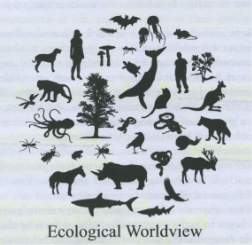
Suggestions and resources to achieve sustainabiity
Focus questions to guide understanding sustaibability and implementation of these principled procedures.
- How do people chose to live sustainably?
- How would they commit to follow principled procedures for a sustainable community?
- How do children develop goals and roles, such as the following?
- How are the forgotten: those restrained by capitalism, racism, sexism, or any other exclusive action of oppression, included?
Goals and roles
- Knowledge - What do you know?
- Critical thinking, for effective decision making skills
- Sustainable ecological and physical systems
- Political, cultural and social systems for effective civic participation
- Environmental issue awareness
- Action strategies and citizen participation
- Many solutions to environmental problems
- Basic civic knowledge of government, history, law, and democracy
- Dispositions - How do you respond to environmental problems?
- Responsible character traits and acceptance of democratic values and dispositions.
- Concerns and attitudes to the environment
- Sensitivity
- Personal responsibility assumption
- Concerns and attitudes to the environment
- Self-efficacy
- Intent and motivation to take action
- Competencies - What skills and abilities do you possess? When and how do you apply them?
- Identify environmental problems
- Question about environmental problems under different environmental conditions
- Analyze environmental problems
- Use primary and secondary sources to investigate the science and social aspects of
environmental problems - Assess and make judgments on environmental problems considering the socio-political systems
- Use evidence and knowledge-based facts to propose solutions to the problems
- Verbal, social, emotional, communication, media skills
- Monitor and evaluate plans to solve environmental problems at various levels and scales
- Responsible behavior towards the environment
- Participatory experiences, and on going
- Participation is habitual and deliberate behaviors individually and within groups to solve current environmental problems sustainably and prevent reemergence of new ones.
Historical development of environmental eduation and sustainable development
- Ideas on historical perspectives and thoughts on the environment,
- The state of environmental education (EE),
- A framework to use to integrate EE and sustainable development (SD) with educational topics,
- Research to support EE and SD,
- Ideas on environmental curriculum,
- Ideas for planning EE & SD,
- Suggestions to integrate environmental issues into content areas, and
- Suggestions to plan ecosystem investigations.
See - EE & SD
Indigenous related notes related to sustainablity
How are Indigenous ways beneficial to promote and sustain ecosystems and foster multi species coexistence?
A western world view tends to consider the present and ignore historical relations between other species and between humans and other species. And focus on biodiversity in a narrow sense as resources to be consumed or restored through conservation plans which are considered as natural without human intervention (such as a pristine forest).
Alternatively, Indigenous ways frame humans as occupants within a terrestrial ecosystem among other beings: animals, plants, mountains, rivers, sky … Expert shamans communicate and manage relationships among terrestrial, aquatic, and aerial domains. Relationships are considered to select interactions that will maintain healthy Earth systems that are necessary for all life.
For example a native path is used by humans in their daily travels to and from homes to gardens, streams, springs, and during foraging, hunting, fishing, and mining natural resources. The same paths taken by other mammals, birds, ants, fishes, insects as well as the water and wind. Paths that when used by these living things impose restrictions and for most of the time call for actions to assure good relations between all to allow a continued presence for all. Actions that will change an area, but will maintain its sustainability over time. Which are tied to seasonal cycles as observed and predicted by the movement of the sun, moon, and constellations. Relationships that become ways of knowing, kinships, communication, negotiation, and exchanges between humans and other organisms in an ecosystem. To organize into practices, processes, restrictions, and prescriptions for ceremonial activities to keep it all working through the cycles that have balanced life for millennia.
Indigenous ways consider natural resources as gifts from nature. Gifts to be used as given from the land and accepted with gratitude and reciprocity so the land can be maintained to provide future gifts naturally. Maternal gifts as a mother nurses a child. A gift to be accepted and used, not hoarded or traded for money. Wiki media, YouTube, software sharing, Tik Tok, Book boxes, pantry boxes, ...
As opposed to changing the land to force more gifts change yourself by seeking gifts from other places. Or if there is not enough of what you want, then want something else. Scarcity in a gift society is bad. Scarcity in a money society is profitable, it raises the price. It can be create naturally or manufactured by monopolistic systems.
Also consider the social interactions with gift giving as opposed to a purchase in a money economy.
Assertion of Native Lands
We acknowledge that we are on the ancestral lands of the Umonhon (Omaha) and "O?héthi Šakówi?" (Sioux) who were removed to our benefits. We honor them as we live, work, and study here by appreciating nature and trying to live sustainable lives in harmony with all living beings with whom we interact.
Guidelines for green public schools
- Curriculum will include opportunities for students to learn about climate change and sustainable solutions to prepare them as global citizens and for good jobs in a green economy.
- Public school buildings will run on renewable energy, have healthy air, and clean water, and be prepared for any local climate impacts.
- Public school's land will be a sustainable safe place to play and learn. Considering the use of the lands impact on its neighboring community's environment (heat, water runoff, flooding, ...)
- Transportation for students will run on clean electricity or cleaner fuels.
- Public schools will serve healthy food, with strong consideration for using locally grown. Consider how not to waste food and when food isn't used it is diverted or composted.
Additional resources
Optimistic book on climate
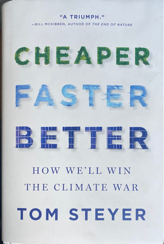 Cheaper Faster Better: How we'll win the climate war. by Tom Steyer. 2024.
Cheaper Faster Better: How we'll win the climate war. by Tom Steyer. 2024.
Tom explains his optimism for how the past should inform us to continue to make progress in keeping our planet inhabitable.
You might think: What are you talking about?
Climate is changing in ways to make it less habitable.
True, but Tom presents a convincing argument that positive change is happening!
When you read his book, will you agree with his conclusion!
I hope that by now you're a climate optimist, too.
We have a huge fight ahead of us, and the fossil fuel industry isn't going to fade away quietly.
But the tide has already turned.
Thanks to new technology, increased public awareness, new laws and rules, and new ways of measuring and understanding the impact of greenhouse gas pollution on our planet, the clean energy revolution hasn't just begun, it's become unstoppable.
More resources
- Global warming - Four pillars of climate stability are the 1. West Antarctic Ice Sheet, 2. the Greenland Ice Sheet, 3. Amazon Rainforest, and 4. the Atlantic Meridional Overturning Circulation (AMOC) - the ocean current system that keeps Europe several degrees warmer than it otherwise would be. A new study published in Augus 2024, in the journal Nature focused on these elements, and discerned the probabilities of their collapse and the impact on the future habitability of the planet. The results were ... not good.
- Dystopian society and apocolypse
- Eco Justice Education. Routelege: NY. 2014. by Dana
- Global mineral rights: Natural resource trusts could work to establish safe, efficient, equitable use and reuse of minerals. Source Science. June 5, 2025.
- Smithsonian article explores the idea that Humans Have Exceeded Six of the Nine Boundaries Keeping Earth Habitable which suggest we are well outside the safe operating space for humanity according to a study that assesses the health of our planet.
- Sustainable futures field guide .PDF
- Braiding Sweetgrass: Indigenous Wisdom, Scientific Knowledge, and the Teachings of Plants. 2013. by Robin Wall Kimmerer.
- Psychological Roots of the Climate Crisis: Neoliberal exceptionalism and the culture of uncare. by Sally Weintrobe
- Environmental health teaching unit - includes: activity Lab notes (worksheets, word bank & key ideas). Content includes: Brainstorm prior knowledge of Nature, Create an environmental model with (environmental factors, organism in the environment, & environmental interactions to maintain a balanced sustainable ecosystem of nature, humans, needs for human survival and environmental variables), Environmental Health Disasters Activity, Historical decisions with Positive & Negative Environmental Impacts, Making healthy environmental decisions today, Influences on environmental decisions, Decision Making for personal and environmental health, Implementation of environmental decisions, and Review
- Ecosystems subject dimensions integration - Reviews a historical perspective of thoughts on the environment, reviews the state of environmental education (EE), a framework to use to integrate EE and sustainable development (SD) with educational topics, research to support EE and SD, scoring guide for environmental concerns, suggestions to assess environmental curriculum, ideas for planning EE & SD, suggestions to integrate environmental issues into content areas, and suggestions to plan ecosystem investigations. And finally a summary of the focus questions.
- Sustainable Communities! is a freely available community research guide developed by the Smithsonian Science Education Center (SSEC) in partnership with the InterAcademy Partnership as part of the Smithsonian Science for Global Goals project.
These Grade 3 - grade 8 research guides use the United Nations Sustainable Development Goals (SDGs) as a framework to focus on sustainable actions that are defined and implemented by students. - A People's Curriculum (k-12) for the Earth: Teaching Climate Change and the Environmental Crisis - A Zinn Education Project
- Sample activity - Cookie coal mining simulation
- Effect of Climate Warming on the Timing of Autumn Leaf Senescence Reverses after the Summer Solstice. M. Zohner et al. Science July 7, 2023.
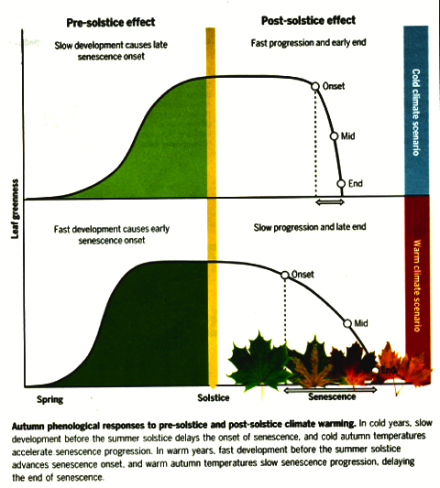
- Fact sheet for Civilization Failures and Environmental disasters
- The unsustainable harvest of coastal sands. Science December 8, 2023. Includes a good overview on the use of sand and possible sustainable managment suggestions.
- Three books by Michael J. Caduto & Joseph Bruchac:. Each is an interdisciplinary program of study about Native American cultures and their ties to Animals, Nighttime activities, and Earth. The activities help explore the environment and engage each person's emotions, senses, thoughts, and actions to explore and expand their ideas of them self and their relationship to Earth, animals, humans, and sustainability. Activities include art, theater, reading, writing, science, social studies, math, and sensory awareness.
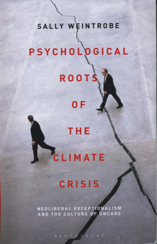
- Some history of Environmental education (EE) & sustainable development (SD)
- Pollution and environmental quality resources
Waste hero lesson library:
Very good introductory lessons to develop understanding of waste, recycling, reuse, non-renuables, circular life cycle and circular business model (sustainable) Includes .pdf files, powerpoints, and worksheets.
Each grade level has three lessons that fit a learning cycle model across K-12 with five levels.
Primary K-2 Lessons include:
- Exploration - Learn to recycle primary grade lesson with story of rabbits learning …
- Intermediate lesson Invent - Discover what can be recycled and how to …
- Discover or application extension lesson - Find it recycle it and learn how long different materials take to decompose
Level 2 Grades 3-5
- Beginner Lesson - Recyclable, Non-Recyclables, And Potential Recyclables review what can and can’t be recycled and how.
- Intermediate Lesson - Where Does Your Recycling Go? … ocean
- Advanced Lesson - What Can You Make From Recycling? Help the environment, save energy, conserve resources, use less, reuse, protects animals, make new products, includes many examples.
Level 3 - Grades 6-8
- Beginner Lesson - Waste Leakage In The Environment
- Intermediate Lesson - A Waste Hero's Story types for recycling
- Advanced Lesson - My Waste Audit - audit process with form
Level 4 - Grades 9-10
- Beginner Lesson - Linear vs Circular Life Cycle
- Intermediate Lesson - Creating The Circular Economy
- Advanced Lesson - Circular Design Challenge
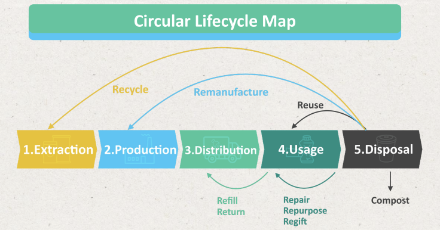
Level 5 - Grades 11-12
How to create a circular business model
- Beginner Lesson - Circular Case Study
- Intermediate Lesson - Redesign For Circularity
- Advanced Lesson - Circular Business Model Canvas
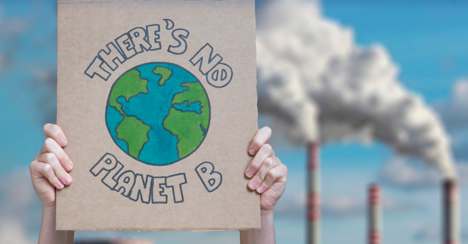
Why Mars isn't an option to save humanity
People who argue for space exploration as a soution should be remined, Mars is a very inhospitable place. For example:
- Mars' temperature can regularly reach minus 81 degrees F.
- The planet’s atmosphere is 95% carbon dioxide.
- Reduced gravity would require daily training to stay in shape.
- Its soil has perchlorates (chlorine compounds) that make it poisonous to life.
- It gets only 60% of the amount of light the Earth gets.
- The psychological effects of being isolated on a hostile planet.
- Travel to and from at its best is only every two years when Mar’s orbit is closest to Earth.
- A communication with anyone on Earth would take between 4 and 20 minutes for the signal to travel from one planet to the other depending on their relative positions.
Ideas on plastic pollution
- We must have a treaty or global agreement to achieve a circular economy where plastic is reused and waste prevention through limiting production.
- Continued plastic use must be designed for longevity of the plastic materials along with building an infrastructure for reuse systems.
- Present subsidies to the fossil fuel industry need to be stopped.
- Someone needs to claim responsibility for plastic cleanup and building a new infrastructure.
- Those who use plastic need to accept the real cost of plastic use to society, health, and the environment to make it cost effective to make a switch.
- Recognize that reduced production is not a viable solution, but a smokescreen for change.
- Must reject any limiting of implementation of a solution which is not comprehensive.
- Must recognize the immediate urgency to prohibit particular plastic products polymers and other restricted plastics.
- Recognize that plastics have exceeded a safe operating space for human rights of a safe and clean environment.
- We must recognize that our current political systems are historically ill suited to address crises. As they are slow and cumbersome as lobbyist push for a laizse-fare unregulated economy and politicians are afraid to take bold actions that might upset the powerbrokers of wall street. So they cobble together timid solutions hoping to appear that they will solve the problems, but they will not.
Climate change comic: I'll be fine I brought an umbrella

 Climate change in the polar regions of our warming world is threatening to transform many of its features, such as this icy tableau in the Fish Islands off the coast of the Antarctic Peninsula. There is still much to learn about these places before we know better what those changes may be. See the special section beginning on page 588. Includes six articles about polar ice and and the latest research on its past and present conditions and how we might predict possible futures.
Climate change in the polar regions of our warming world is threatening to transform many of its features, such as this icy tableau in the Fish Islands off the coast of the Antarctic Peninsula. There is still much to learn about these places before we know better what those changes may be. See the special section beginning on page 588. Includes six articles about polar ice and and the latest research on its past and present conditions and how we might predict possible futures.
Change, act, or what?
When people say something is too complicated or unknowable, it is an excuse to not do anything, which if applied to climate, is not survivable.
While the web of relationships within nature, among animals, people, weather, sun, soil, streams, fruit, livestock, is far too vast and complicated to fully comprehend.
We must accept the idea that some things were unknowable, and make the best choices we can with the information we have and be willing to be resilient for future changes when needed. To do otherwise and wait for perfect information, will result in our waiting forever. Or if you act as though you understand something completely, you'll make bad decisions.
Conceptual model of the Earth systems

Uranium mining in the Grand Canyon region ...

Poison in a food chain


The sex of terrapins is determined by the temperature of the egg during its incubation. A warmer temperature creates females and cooler males.
Global Warming in the Amazon River Basin in 2023
In 2023, an unprecedented drought and heat wave in Amazon waters, lead to the death of multiple fishes and river dolphins.
Five of 10 lakes monitored had exceptionally high daytime water temperatures (over 37°C), with one large lake reaching up to 41°C or 104°F in the entire approximately 2-meter-deep water.
Extreme warming of Amazon waters in a changing climate. Ayan Santos Fleischman, et. al. . Science November 6, 2025.

Sustainable development goals

Sustainable development goals
- No poverty
- Zero hunger
- Good health and well being
- Quality education
- Gender equality
- Clean water and sanitation
- Affordable and clean energy
- Decent work and economic growth
- Industry, innovation, and infrastructure
- Reduced inequalities
- Sustainable cities and communities
- Responsible consumption and production
- Climate action
- Life below water
- Life on land
- Peace, justice and strong institutions
- Partnerships for the goals
Hazards against sustainability
Hunger is often the results of a power imbalance with powerful institutions oppressing populations in four ways: to eliminate others who are considered inconvenient, to force labor or debt, to reward or punish, or to earn profits.
Cascading land hazard events - floods, wildfires, catastrophic storms (tornadoes, hurricanes) are devistating alone. However, different earth processes can interact to initiate and sustain hazards. Climate change may cause large amounts of rain in short periods of time. Whic can cascade into flooding, which will alter the land surfaces reducing the productivity of the land for agriculture or critically changing an urban footprint.
Similarly glacier melt, rising oceans, volcanoes, earthquakes, tsunamies, and more can create cascading effects.
Notes from Cheaper Faster Better: How we’ll win the climate war. by Tom Steyer, 2024.
Today, our world needs to change quickly and we need teams to make that happen. We need new technologies, new ways of creating energy, new ways to cut emissions of greenhouse gas. Then, we need to figure out how to deploy these new technologies worldwide, in countries with wildly different levels of infrastructure, prosperity, and political stability, all while facing relentless opposition from fossil fuels.
A summary of areas of concern with possible solutions is organized by: Energy provided as electrical for transportation, manufacturing, agriculture, and habital buildings.
1. Electricity generation. The great thing about all the power, if you ignore the fact that they're killing us, is that they're powerhouses of stored energy: For more than a century, we've turned that pent-up energy into heat and used that heat to create electricity. We need to create more electricity than ever as things that used to be powered by fossil fuels, like cars, are going to become electric; as the world population grows; and as more countries access the miracles of modern life. If we want to do this without destroying human society, as we know it, we need to create all that electricity in a way that doesn't rely on fossil fuel-generated heat. That means building up existing clean and renewable technologies like solar, wind, geo-thermal, and, if it can be done cleanly and safely, nuclear. It means trying to find new sources of energy and electricity, for example through nuclear fusion. It also means that we need to support all the things that get the electricity wherever it needs to go-better batteries, transmission lines, and power grids.
2. Transportation. Burning fossil fuels is one way to move vehicles from point A to point B. We need a better way. Electric cars, electric trucks, electric buses, and the charging networks needed to connect them to clean-energy grids will play a large role here. Making public transportation more efficient and reliable will help get cars and pollution associated with manufacturing them as well as driving them— Off the road as well. But other types of transportation are harder to electrify, especially passenger and cargo planes, because at the moment, any battery big enough to power them would be too heavy to get off the ground. Shipping whether by truck or boat is hard to electrify as well, for a similar reason: a big battery takes up space that could be occupied by cargo. That means we'll need to rely not just on new sources of electricity but on new battery technologies and new sources of fuel. (One possibility is green hydrogen. We need to move down the technology cost curve, but if we can make it work, it will be better, faster, cheaper, and cleaner than anything else out there).
3. Manufacturing. Let's say you buy an electric car and hook it up to a grid powered by renewable energy. That's zero greenhouse-gas pollution. But what about all the carbon and methane emitted when they were building that car? Or your phone? Or your cloth-ing? Or basically anything else manufactured, which these days is almost everything? The basic problem is that manufacturing takes an enormous amount of energy, and in particular requires very high heat. We need to figure out how to make things using less heat, and how to generate heat without generating as many emissions.
4. Agriculture. As we feed a growing world wide population, the ways we raise plants and animals have to change. For example, nitrogen fertilizer-which didn't exist 120 years ago but today is considered essential to industrial farming— is a huge source of emissions because it's made using fossil fuels. There's also the problem of deforestation. When an acre of rainforest is cut down to clear land for a palm oil plantation or a cattle ranch, it's like wringing a giant sponge full of greenhouse gas into the air. We have to start producing the food we need without all the emissions.
See: The Burgeoning Global Food Trade is a Lifeline for Billions. Is it breaking the planet?
Science. Includes some rally astonishing photos. pdf
5. Buildings. Plumbing, Air conditioning, and Heating. Whether it's a house, an office, or any other type of modern structure, our buildings use an enormous amount of energy, and right now that means they create an enormous amount of greenhouse gas pol-lution. Even worse, most buildings leak. We need to make sure that what we're building today is net-zero emissions. But because it's estimated that in developed economies, about 80 percent of buildings in use today will still be in use in 2050, focusing on new construction alone isn't enough. We need to retrofit old buildings so that they waste less energy—and cost their owners less money in the process.
Over the years, as I made a lot of money, it didn't make me any smarter. It just meant I had more money.
Tom Steyer
If you want me in at the landing, ask me in on the takeoff.
George Shultz
Think about it!
How can the fossil fuel industry and supporters claim to be in favor of free markets, small government, and government hand outs; when they abandoned the principle of small government to attack clean energy by trying to shut down clean and green energies from the market with government regulations. And they themselves lobby for more tax breaks and handouts for expanding production and price supports to protect them from foreign markets.
Donald Trump can't claim to be "America First" while trying to keep cleaner, cheaper, safer energy out of Americans' hands. And you can't claim to be tough enough to stand up to countries like China while surrendering our competitive advantage in one of the world's fastest-growing industries. powerful conservative think tank abandoned the principle of small government to attack clean energy and support fossil fuel industries! Climate justice aligns with actions that are pro environment.
Home: Pedagogy - theory, curriculum, learning, human development, & teaching


